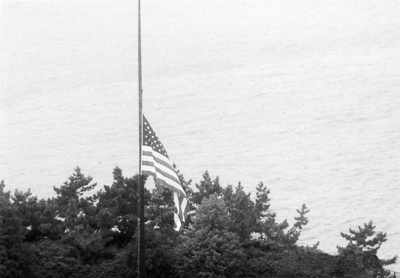All Nonfiction
- Bullying
- Books
- Academic
- Author Interviews
- Celebrity interviews
- College Articles
- College Essays
- Educator of the Year
- Heroes
- Interviews
- Memoir
- Personal Experience
- Sports
- Travel & Culture
All Opinions
- Bullying
- Current Events / Politics
- Discrimination
- Drugs / Alcohol / Smoking
- Entertainment / Celebrities
- Environment
- Love / Relationships
- Movies / Music / TV
- Pop Culture / Trends
- School / College
- Social Issues / Civics
- Spirituality / Religion
- Sports / Hobbies
All Hot Topics
- Bullying
- Community Service
- Environment
- Health
- Letters to the Editor
- Pride & Prejudice
- What Matters
- Back
Summer Guide
- Program Links
- Program Reviews
- Back
College Guide
- College Links
- College Reviews
- College Essays
- College Articles
- Back
Minorities in the War
World War II was a brutal global war between the Allied Powers (Great Britain, France, Soviet Union, and the United States) and the Axis Powers (Germany, Italy, and Japan). The war began in 1939 due to the determination of the Nazi Germany to take over all of Europe in order to spread fascism. The Allied powers joined the war in order to fight for an end to fascism and for the the liberation of European countries from Nazi rule. Since the war was being fought worldwide, the United States, along with other countries, turned every aspect of life into some type of war effort. Car factories began to produce tanks and ships, shoe factories began to produce uniforms and equipment, and even citizens began to grow victory gardens in order produce food for the soldiers. Since most men over the age of 18 were fighting in the war, women, African Americans, Hispanics, and other minorities filled these roles to help out the war effort at the home front. Though these people were rarely allowed to fight in the war, their contributions were equally as important through their achievements in manufacturing and engineering, researching and experimenting, and inventing and revolutionizing.
While most of the men were at war, women were forced to fill many roles that were not socially acceptable for their time. Because there was such a high demand for weapons and machinery, women began to work in factories and manufacturing lines. There, women produced uniforms and equipment, built machines and vehicles, and prepared and packaged food. Most women were put to work in the aircraft industry building fighters, bombers, and transport planes. By 1942, over a million women were working in some type of factor or assembly line. SOme women when into scientific research to invent and improve the machinery and weaponry of the war. Women with medical backgrounds were sometimes drafted to serve as nurses on the Army or Navy’s Emergency Medical Team. Women who were not drafted but still wanted to serve volunteered for WAVES (Women Accepted for Volunteer Emergency Services), others volunteered with the Red Cross. On the rare occasion, small organizations of women were trained in order to fight in the war. One of the most notable organizations is the WASPs (Women’s Airforce Service Pilots). WASPs trained civilian women to fly and operate military planes. Another notable organization was the WAC (Women’s Army Corps). The WAC was an organization of women who provided “auxiliaries” to the already existing army. Though women never actually fought in the war, their efforts at the home front and behind the front lines were truly key components in the success of WWII.
At the beginning of the war, the Army, Air Force, and Marines restricted African Americans and other minorities from enlisting in the war, however, minority combat units were established later on. Some of the most notable combat units were the 92nd and 93rd Infantry Divisions. These divisions were all black combat units in the Army established in 1942. Most men who wished to enlist in the Navy were drafted as cooks and attendants. One of the most notable African American Navy sailors was Doris Miller. Doris Miller was ordered to take care of the wounded during the Pearl Harbor attack. While managing to tend to his wounded shipmates, “Dorie” started to fire a machine gun, a weapon he was not trained on how to use, at the Japanese fighter pilots. Occasionally, these men were assigned duties as apart of the gun crew. After Pearl Harbor, many Asian Americans were labeled “enemy allies” and discharged from the army, especially if they were undertaking the ROTC Program in Hawaii. Many of these men still wished to served and formed the Varsity Victory Volunteers also known as the Corps of Engineers Auxiliary. Those who were not discharged, specifically Japanese Americans, were sometimes put on the Military Intelligence Service or the Office of Strategic Services on the Pacific Front. At home, minorities also worked in factories and assembly lines, just as women did, packaging food, loading supplies, and building vehicles, machines, and other equipment. Though not given the same treatment, pay, or recognition as some of the other veterans, minorities were extremely significant in the efforts of WWII.
Minorities and women both greatly contributed to the war efforts during the 1940s. These brave young men and women succeeded in both the manufactoral and on-site components of the war. Without the care of the nurses in the Navy and Army Emergency Medical Team, the bravery of the descriminized soldiers such as Doris Miller, the hard work of the men and women in the factories, and the nationalism that inspired all of these citizens to take action, the war would have been a devastating one. Though these men and women faced a lot of criticism and discrimination over the most minuscule characteristics, their accomplishments were far from small.

Similar Articles
JOIN THE DISCUSSION
This article has 0 comments.

This article is about the efforts of minorities during World War II.